By Jeffrey A. Rendall, Images Courtesy of Nike Golf
BEAVERTON, OR – It’s often said golfers have short memories, and when talking about the latest introductions of adjustable drivers and fairway woods, that’s a positive thing. The products of the recent past have been certainly been solid – but the new ones are even better.
These creations help us quickly forget the older ones – and who doesn’t like to get new clubs?
One case in point is the new (for 2015) Nike Vapor Flex Driver and Fairway Woods. The Vapor Flex (which is part of the Vapor driver family) follows the already outstanding Nike VRS Covert 2.0 models, adding a few new innovations and delivering even more adjustability options.
The result? More distance.
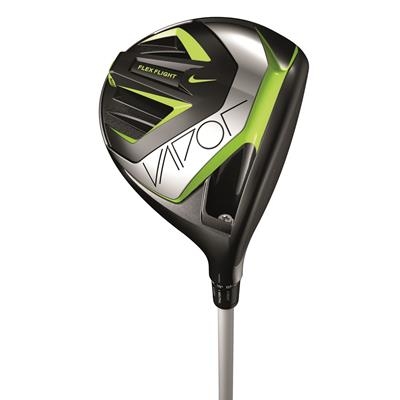 |
As time marches on, it’s getting harder to see how golf manufacturers would be able to top the previous introductions, but somehow they’re doing it.
New technologies in the Vapor drivers include Nike’s FlyBeams, which stiffen the cavity back of the club. Then there’s a re-engineered Compression Channel that accentuates the spring-like effect across the face to return energy to the golf ball. Finally, there’s FlexLoft 2, which allows players the choice of five different lofts and three face angles – 15 possible settings in all.
In other words, it’s another driver for tinkerers to enjoy. But to truly get the most out of the club, we can’t help but think you’ll need professional fitting guidance – or a lot of range balls.
Nike says the three new drivers deliver distance for every golf swing. There’s enough variety here to supply it, too.
In a nutshell, the Vapor Pro model is slightly smaller with a low launch and is generally preferred by Tour players such as Rory McIlroy. The Vapor Speed is designed for high launch and is the driver of choice for Tiger Woods.
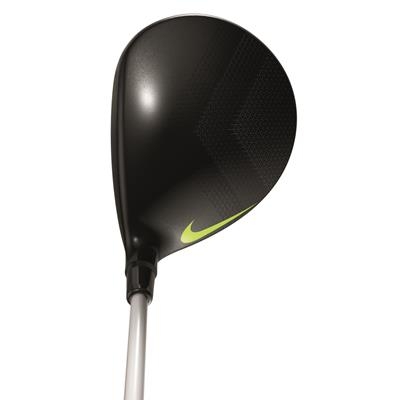 |
We chose the Flex version because of the FlexFlight system, which features a RZN tube with a high-density weight on one end (called the FlightPod). The FlightPod is located in the cavity of the club and can be flipped over to change the center of gravity from low and forward to low and back.
Pretty simple, all things considered. Like the FlexLoft 2 system (which alters loft and face angle), it’s all fairly intuitive and very straightforward for anyone who’s used an adjustable club before.
According to Nike, the FlexFlight system impacts launch angle, spin rate, forgiveness (increased in the “mid” setting) and workability (enhanced in the “low” setting).
You can see the variation on a launch monitor. Seeing a distinction simply by hitting balls is a challenge, though the different settings seemed to offer slightly different ball flight. For us, the low and forward was fairly straight and the low and back produced more of a fade.
Changing the face angle can add a further dimension. Again, a driver for every swing.
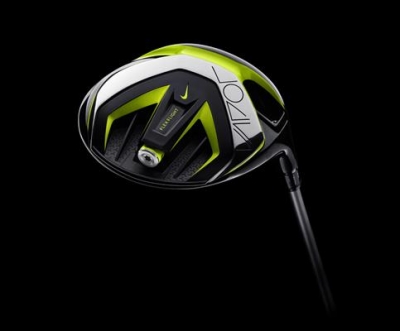 |
Both FlexFlight settings offered better than average forgiveness. That’s true of nearly all of the drivers of recent times – they’re much easier to hit than the days of old.
Why is the FlexFlight system necessary? Nate Radcliffe, Director of Engineering for Nike Golf, explains: “Often times in the fitting process, there’s an opportunity for a final adjustment to develop the shot shape and ball flight the athlete is looking for. That’s how FlexFlight can help.”
“With a simple quarter turn, we can adjust the mass of the FlexFlight module forward and backward within the club to change the trajectory and shot shape for the athlete. In doing so, we are seeing that a two-plus millimeter shift will change launch angle up to a degree -- and it gives us that fine-tuning change in spin of about 300 rpm. As the last step in the fitting process, that can be the difference between the athlete being comfortable with the fitting and really being able to compete with it on the golf course.”
Loft adjustments range from 8.5 degrees to 12.5 degrees – that’s a huge dispersion. We’re not sure if it makes fitting easier or harder having such choice, but we’d rather have options than be stuck with a static setting.
We opted to go with 9.5 degrees of loft with a neutral face, which produced the most consistent ball flight. Because of the multitude of adjustments, it’s hard to tell whether the shaft (Mitsubishi Diamana 60) was a perfect fit, but it’s a very high quality shaft in any case.
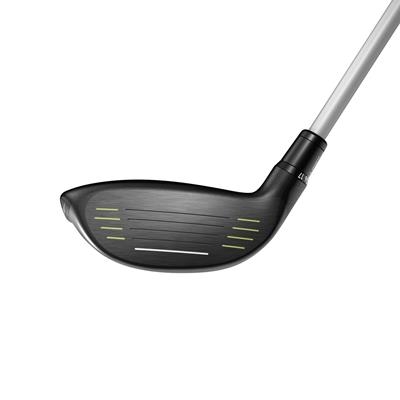 |
Distance was more than satisfactory. Feel was better than average and forgiveness, as mentioned above, was excellent. The only area that was a little wanting was the sound, but that’s a small consideration when judging overall performance.
We don’t endorse products, but as always, we highly recommend trying the latest Nike drivers before finalizing your purchase decisions. Together with a professional fitting, it’s the only way to make sure your money is well spent.
Vapor Flex Fairway Woods
Along with the Vapor Flex driver, we also tried the Vapor Flex Fairway Woods.
Like the Vapor drivers, the Vapor fairway woods (Speed and Flex) feature Nike’s new FlyBeam-reinforced Covert Cavity Back design, a reengineered Compression Channel and a NexCOR face. The Flex model is slightly more compact than the Speed and adds the FlexLoft2 adjustability system with its 15 different settings.
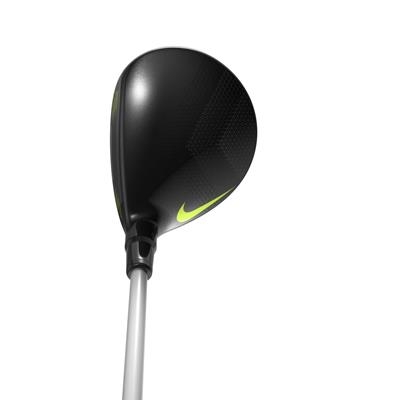 |
Radcliffe returns to discuss the new features in the Vapor Fairway Woods. “Athlete insights drove significant chassis refinement in the Vapor fairway woods. Our athletes wanted tighter but forgiving leading edges, fuller profiles and added ball speed. We’ve delivered that with the synergy of our FlyBeam and compression channel technologies.”
“Athletes, including Tiger Woods, requested larger face profiles in fairway woods, but it was vital that we do that without compromising ball speed or optimal launch conditions. We successfully modified the chassis by sloping the crown to lower the CG, which optimized launch characteristics across the family,” Radcliffe added.
Again, according to Nike, the new FlexLoft system is five grams (30 percent) lighter without compromising function, which leads to a center of gravity that is up to 2mm lower on the Vapor Flex fairways.
The redistribution of mass creates more stability, better launch conditions and faster swing speeds.
One note before sharing some personal observations – both the Vapor drivers and fairways return to more of a “traditional” color pattern than the previous Covert 2.0 models, which were bright red. We liked the Covert red – largely because it was so distinct – but if pressed, we preferred the colors on the Vapor clubs.
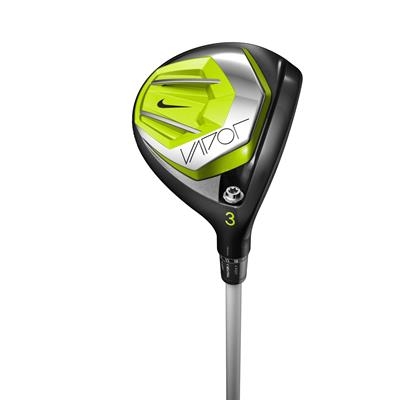 |
The Vapors are dark in color with a bright yellow Nike swoosh – very nice and confidence inspiring.
As alluded to above, the Speed fairway is larger than the Flex, with the biggest difference between the two being loft and face angle adjustability are featured in the Flex model. Some better players may not need or use loft adjustability on a fairway wood, but for us, we enjoyed being able to move it up or down.
On tight courses, it’s nice to know you can bring a 13 degree three-wood to the tee and have a better chance at keeping it in the fairway than with a driver.
Likewise, the Flex gives you more options in terms of increasing the loft and maybe pulling a five-wood out of the bag – again, depending on the course.
Specialization is a good thing and the smaller looks of the Flex didn’t bother us.
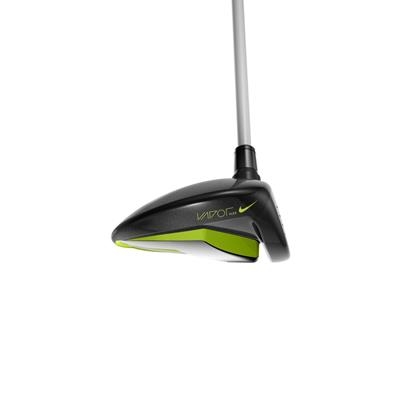 |
Like the Vapor Flex driver, the Flex three-wood was very forgiving – especially off the tee. Early season conditions prevented us from trying the club on a variety of different lies, but hitting off the deck didn’t prove to be much problem.
All around, the club looks great, feels smooth, sounds nice and appears to give good distance.
It’s yet another quality offering from Nike. The company gets headlines for its affiliation with Rory McIlroy and Tiger Woods, but they are just well known faces at the forefront of a lot of great technology. Nike has certainly put the resources into developing top-of-the-line equipment, and the investment is paying off.
Details:
Available at your higher-end golf retailers and club pro shops.
Nike Vapor Flex Driver
Specifications: 8.5° – 12.5° loft; Diamana S+ 60G (Blue Board) shaft; RH/LH: R, S, X flex
Nike Vapor Flex Fairway Woods
Specifications: 3W: 13° - 17° (RH/LH); 5W: 17° - 21° (RH/LH): MRC Diamana S+ Blue Board 70 shaft: X, S, R
| Related Links | Comments on this article? | |
|
Maryland National Golf Club Hollow Creek Golf Club Rocky Gap Resort PB Dye Golf Club in Ijamsville Whiskey Creek Golf Club |
E-mail Jeff Rendall, Editor: jrendall@golftheunitedstates.com |












